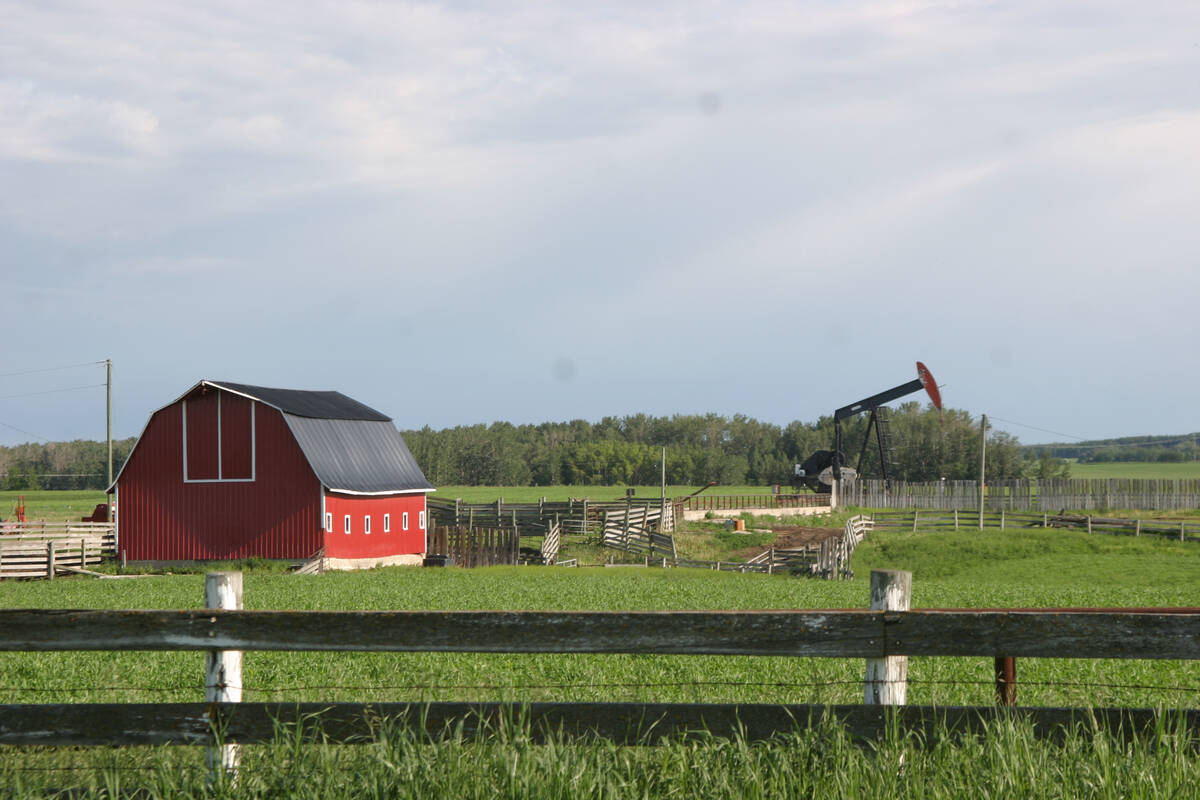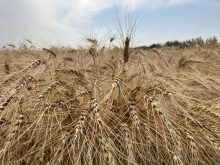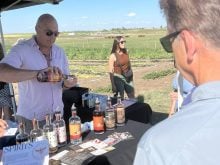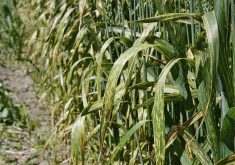Something needs to be done to boost funding for cereal breeding, but kicking the contentious issue of seed royalties down the road seems to be the preferred option at the moment.
That was the message coming out of a discussion on a pair of controversial royalty schemes at the recent Alberta Federation of Agriculture AGM.

“We haven’t endorsed either of the two models presented yet — we feel that there hasn’t been enough consultation,” outgoing Alberta Wheat chair Kevin Bender said at the meeting.
“Farmers need to be convinced there’s value if there’s a fee charged to them.”
Earlier this month, Alberta Wheat, Alberta Barley, and their sister organizations in Saskatchewan and Manitoba sent a joint letter to federal Agriculture Minister Lawrence MacAulay saying there was little farmer support for two proposed royalty models and “more consultation including consideration of other options” is needed.
“When the consultations started, there was a lot of push-back from the farming community,” said Bender. “There was a lot of misunderstanding and lack of information on its part.
“We felt that maybe the consultations were brought out too quickly and not enough information was given out to farmers about what was potentially happening and the ideas going forward.”
More than two years of industry consultations produced the two royalty options that received a cool reception from farmers at meetings held across the Prairies earlier this winter. Currently, cereal growers only pay a royalty to variety developers when buying certified seed, a system the seed industry contends doesn’t generate enough revenue to encourage development of new varieties.

“It takes up to $1 million to bring a variety to market and that’s light,” Todd Hyra, SeCan’s business manager for Western Canada, told the meeting. “That’s a number I was using in the early ’90s. It’s probably like $5 million to $10 million to bring a cereal variety through a public breeding program.”
Royalties paid on certified seed don’t begin to cover that cost, said Hyra.
He used durum as an example, saying only about 10 to 12 per cent of annual plantings are from certified seed.
“Certified seed usage in Canada is not a really attractive story to try and attract investment from other parts of the world,” he said.
Read Also

Recommendations in the mature assets strategy could cause potential problems for landholders
The Western Stock Growers’ Association urges producers to pay attention to the potential changes to Alberta’s Mature Assets Strategy.
SeCan and three other major independent seed companies (Alliance Seed, Canterra Seeds, and FP Genetics) argue Prairie farmers need to “get the facts” on the two proposed royalty systems.
One is the end point royalty option that would see farmers pay a levy when they sold their cereal grain. The second, called a trailing royalty, would see farmers continue to pay a fee on certified seed but also one on seed saved for planting. Both options would only apply to varieties covered under UPOV ’91 plant breeders’ rights rules. Farmers could grow older varieties without paying royalties.
‘No pressure’ to act
Bender said Alberta Wheat has always believed in investing in research, particularly when it applies to varietal breeding.
“At the same time, we have always been advocates for farmers’ rights to save their seed and that is something that has come loudly and clearly from our community,” he said. “They want to maintain that right. That’s something that is coming from them, and we need to maintain that interest.
“But at the same time, we know more investment is needed. We see we are falling behind some of these other countries where they do have investment in it.”
Other options need to be considered, he said.
“We just feel we need to investigate this a bit more,” he said.
A senior Ag Canada official at the meeting said there is no rush to push through a royalty system.

“There’s no pressure to make a decision now,” said Holly Mayer. “There is a regulatory opening in 2020 when the regulations under the seed act and the plant breeders’ rights act will be open for updating. That is one window that can be used to make the regulatory changes that will allow one or any of these models to be implemented… it’s a window — it’s not a deadline that must be met.”
While many farmers have taken an ‘if it ain’t broke, don’t fix it’ view of the situation, there was general agreement a new approach is needed.
“The status quo doesn’t meet the objective of increasing overall investment,” said Mayer.
And the status quo isn’t what it was.
Agriculture Canada closed its cereal research station in Manitoba a few years ago, reduced its barley-breeding program (to focus on trait development), and stations such as Swift Current are producing far fewer varieties than they used to, Hyra said.
Given it takes a decade or more to produce a new variety, the cereal sector has to take a long-term view, he said.
“We want to make sure we have a strong future,” he said. “Think about that funnel, that those 10 to 12 years of products remain strong going forward.”
It is important to have both private and public breeders in Canada, he said.
Tricky equation
While the current system isn’t “broken,” that doesn’t mean change isn’t needed, said Richard Gray, an agricultural economist at the University of Saskatchewan.

“Right now, agriculture research is well funded,” said Gray. “But what happens after that? Is the next government going to be the same? Or the one after that?
“Where are we going to be in 10 or 20 years from now? Royalties aren’t going to fix it in the short run. But in the long run, we need to at least put things in place.”
However, it’s a tricky equation, he added.
For example, an infusion of private sector funding might prompt both Ottawa and farmers to cut back.
“There’s always a possibility that if more money is coming in, the government can change its mind and reduce funds,” he said. “If producers are asked to pay an end point royalty, they can be less likely to contribute to producer checkoffs, which results in lower producer investment.”
That would not only shrink the pot of money for breeding new varieties, but could see large multinational seed companies gain excessive market power like they have over soybeans, corn, and canola, he said.
“As a farmer, I hear that argument often,” said Bender. “We don’t want to see wheat go down the same path as canola.”
But Hrya said that’s unlikely.
“Wheat is a bulky crop. It needs to be grown locally, sold locally, and processed locally,” he said.
Gray offered two recommendations.
“I think producer groups need to come together and get some direction to this. Without direction, change happens even slower,” he said.
Secondly, producers should consider a way to be directly involved in variety development, such as creating some form of private structure, he said.
“We need to think about government matching non-refundable producer levies,” said Gray.
It’s a good time to be approaching government with this sort of plan because it views agriculture as an “innovation engine” and is willing to invest public dollars, he added.
And Ottawa is open to considering alternative options, Mayer suggested.
“For now, what we’re going forward with is talking about the two models that were developed and how they would work,” she said. “But no decisions have been made.”
Agriculture Canada will conduct online consultations beginning in February and this will be followed by another set of formal consultations, she said.
– With staff files
















